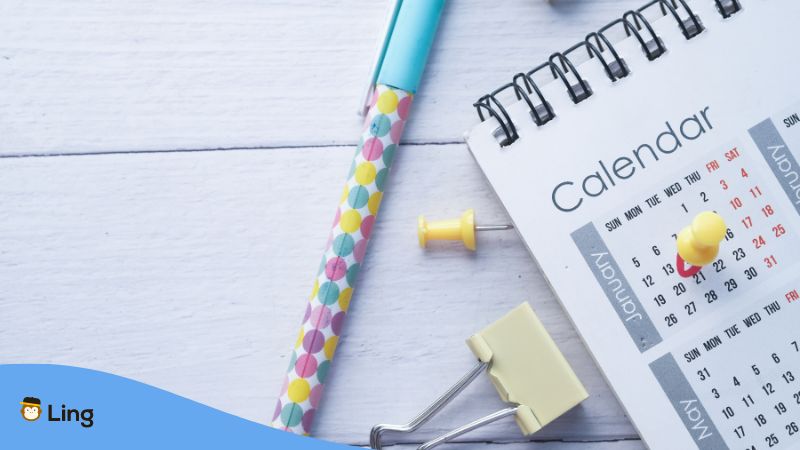What’s the first thing you learn in a new language when you travel to a different country? Is it how to say ‘thank you,’ ‘please,’ ‘yes,’ or ‘no’? Well, those are undoubtedly important, but let me tell you about some words and expressions that can be just as useful, if not more so.
Let’s rewind to my last visit to the beautiful land of Mongolia. Picture me strolling down the vibrant streets of Ulaanbaatar, eagerly anticipating a reservation I had made months in advance at a renowned local Mongolian restaurant. I had been fasting all day, preparing myself for an epic feast of delectable Mongolian treats. But just when the hunger was about to consume me, disaster struck – my phone crashed, and the screen shattered into a thousand pieces. Panic ensued!

You see, I was faced with an unthinkable dilemma. How on earth was I supposed to know when to head to the restaurant? The clock was ticking, quite literally, because they only hold reservations for a mere 15 minutes! I ran around like a headless chicken, desperately asking anyone within earshot for the time. However, there was one tiny problem – I had absolutely no idea how to ask or tell the time in Mongolian!
As you might have guessed, the outcome of this unfortunate predicament was not in my favor. I lost the reservation, and my dreams of savoring authentic Mongolian cuisine were crushed. In a fit of frustration, I settled for a meal at McDonald’s, which, let’s be honest, wasn’t quite the culinary adventure I had in mind.
In this article, we are going to tackle the mighty challenge of telling the date and time in Mongolian. Trust me, knowing how to navigate the intricacies of timekeeping in this enchanting language can save you from countless mishaps and missed opportunities.
Imagine finding yourself invited to a traditional Mongolian event, where punctuality is revered and being fashionably late simply won’t do. Or perhaps you want to catch a breathtaking sunrise at the awe-inspiring Terelj National Park but don’t want to miss the magical moment. Knowing how to tell the time in Mongolian can be the key to unlocking these unforgettable experiences.
So join me on this linguistic adventure as we unravel the mysteries of Mongolian timekeeping and ensure that no reservation goes unfulfilled or a delicious meal goes untasted!

The Date In Mongolian
Months In Mongolian
Now that we’re ready to embark on our Mongolian timekeeping journey, let’s start with an essential piece of the puzzle – the months of the year. Being able to write and pronounce the months correctly will not only help you navigate schedules and appointments but also impress the locals with your language skills. So, without further ado, let’s dive into the enchanting realm of Mongolian months!
Here’s a handy table to assist you in your quest:
| English | Mongolian | Pronunciation |
| January | Нэгдүгээр | Negdügeer |
| February | Хоёрдугаар | Khoyorduga |
| March | Гуравдугаа | Guravdugaa |
| April | Дөрөвдүгээ | Dörövdügee |
| May | Тавдугаар | Tavdugaar |
| June | Зургадугаа | Zurgadugaa |
| July | долдугаар | Doldugaar |
| August | Наймдугаар | Naimdugaar |
| September | Есдүгээр с | Yesdügeer |
| October | Аравдугаар | Aravdugaar |
| November | Арваннэгдү | Arvannegdü |
| December | Арванхоёрд | Arvankhoyo |
It’s worth noting that Mongolian months align with the Gregorian calendar we’re familiar with, making it relatively straightforward to keep track of time and plan your adventures accordingly. So, whether you’re scheduling a winter wonderland escape in January or planning a summer excursion in July, knowing how to write and say the months in Mongolian will prove invaluable.

Days Of The Week In Mongolian
It’s time to acquaint ourselves with the days of the week. Just like in any other language, knowing the days of the week in Mongolian will allow you to organize your schedule, plan your activities, and navigate the vibrant rhythm of everyday life. So, let’s dive in and explore the days that make up the Mongolian week!
| English | Mongolian | Pronunciation |
| Monday | Даваа | Davaa |
| Tuesday | Мягмар | Myagmar |
| Wednesday | Лхагва | Lkhagva |
| Thursday | Пүрэв | Pürev |
| Friday | Баасан | Baasan |
| Saturday | Бямба | Byamba |
| Sunday | Ням | Nyam |

Years In Mongolian
Before we embark on our journey to uncover the intricacies of writing years in Mongolian, it’s important to note that having a basic knowledge of numbers in Mongolian will be beneficial. If you’re not familiar with Mongolian numbers, don’t worry! You can refer to our blog or language resources to get up to speed. Now, let’s delve into the captivating realm of Mongolian years!
In Mongolian, the word “он” (on) is used to denote “year.” To express a specific year, you simply combine the numbers with “он” to form a complete phrase. Here are a few examples of how years are written and pronounced in Mongolian:
- 2020: 2,020 оны | Хоёр зуун он (Khor zuun on)
- 1985: 1,985 оны | Нэг зуун сая (Neg zuun saya)
- 1999: 1,999 оны | Нэг зуун долоо (Neg zuun doloo)
- 2025: 2,025 оны | Хоёр зуун хорь (Khor zuun khor)
- 2037: 2,037 оны | Хоёр зуун гуч (Khor zuun guch)
- 1973: 1,973 оны | Нэг зуун зургаа (Neg zuun zurgaa)

How To Write The Date In Mongolian
With our growing arsenal of knowledge about Mongolian timekeeping, we are now ready to tackle the task of writing the date in Mongolian. By combining our understanding of months, days, and years, we can confidently express and comprehend dates with finesse. So, let’s dive into the fascinating world of Mongolian dates!
In Mongolia, the most commonly used format for writing the date follows the order of year, month, and day. This format ensures clarity and consistency in conveying dates effectively. Let’s explore an example to illustrate how to write and pronounce a date in Mongolian:
Example: June 13, 2023
In Mongolian script: 2023 оны 6-р сарын 13-ны өдөр
Pronunciation: Хоёр зуун гурванын арван гурваны өдөр (Khor zuun gurvanyn arvan gurvanyn ödör)
In the example above, we start with the year “2023 оны” (khor zuun ony), followed by the month “6-р сарын” (gurvanyn saryn) meaning “of June,” and finally, the day “13-ны өдөр” (arvan gurvanyn ödör) meaning “the 13th day.”
By mastering this format, you’ll be able to confidently express dates in Mongolian. Whether you’re scheduling appointments, noting special occasions, or simply engaging in everyday conversations, this knowledge will prove invaluable.
Once again, it’s worth noting that Mongolia uses the Gregorian calendar, which aligns with the internationally recognized calendar system. This means that Mongolian dates follow the same structure and order as dates in many other parts of the world.

How To Tell Time In Mongolian
In our final chapter of this Mongolian timekeeping journey, we’ll unlock the secrets of telling the time in Mongolian. Time is an essential aspect of our daily lives, and being able to express and comprehend it accurately is crucial.
Let’s explore an example to see how time is written and pronounced in Mongolian:
Example: 3:30 PM
In Mongolian script: 3 цаг 30 минут | Гурван цаг гуч минут (Gurvan tsag guch minut)
In this example, we start with the hour “3 цаг” (gurvan tsag), followed by the minutes “30 минут” (guch minut), which translates to “30 minutes.” Together, we have “Гурван цаг гуч минут” (Gurvan tsag guch minut), meaning “three o’clock thirty minutes.”
Now, let’s unravel the mysteries of expressing time using “half past,” “quarter to,” and “quarter past” in Mongolian:
- Half Past (30 minutes past the hour):
- Example: 2:30 PM
- Mongolian: 2 цаг 30 минут | Хоёр цаг гуч минут (Khor tsag guch minut)
- Pronunciation: Хоёр цаг гуч минут (Khor tsag guch minut)
- Quarter To (15 minutes before the next hour):
- Example: 4:45 PM
- Mongolian: 5 цаг хоногийн хоёр бор (Tav tsag khonogyn khor bor)
- Pronunciation: Тав цаг хоногийн хоёр бор (Tav tsag khonogyn khor bor)
- Quarter Past (15 minutes past the hour):
- Example: 9:15 AM
- Mongolian: 9 цаг хоногийн гурван чөм (Doloo tsag khonogyn gurvan chöm)
- Pronunciation: Долоо цаг хоногийн гурван чөм (Doloo tsag khonogyn gurvan chöm)
By mastering these expressions, you’ll be able to tell time with ease, incorporating precise details such as half past, quarter to, and quarter past. These phrases add depth and accuracy to your time-related conversations and ensure effective communication.
When telling the time, there are a few terms that are also helpful not only to help you say the correct time, but also to speed up this process:
| English | Mongolian | Pronunciation |
| Hour | цаг | tsag |
| Minute | минут | minut |
| Second | хоёрдугаарт | khoyordugaart |
| Noon | үд дунд | üd dund |
| Midnight | шөнө дунд | shönö dund |
| Afternoon | үдээс хойш | üdees khoish |
| Morning | өглөө | öglöö |
| Evening | орой | oroi |
| Night | шөнө | shönö |
It is important to note that Mongolian does not have multiple time zones, so Ulaanbaatar time (or Ulan Bator) is the same as any other city in the country. If you know the current local time, you’re set to know you can book a restaurant on the other side of the country in the same time zone as you!
Learn More About The Date And Time In Mongolian With Ling App
Congratulations on completing our journey through the intricacies of Mongolian timekeeping! To further enhance your language learning experience and dive deeper into the nuances of Mongolian (and other languages), let me present to you the Ling app. This powerful language learning tool offers a multitude of features designed to make your language journey seamless and enjoyable.
Download the Ling app today from Google Play and App Store and embark on your linguistic voyage to mastering Mongolian. Prepare to unlock doors to new friendships, cultural understanding, and a world of possibilities.
Ирээдүйдээ амжилттай аяллаарай! (Ireedüüdee amjilttai ayalalaarai!) — Safe travels on your journey!


































































